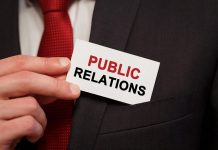Workplace communication skills have become a cornerstone of career success in today’s dynamic professional landscape.
Effective communication isn’t just a desirable trait; it’s an essential tool for navigating the complexities of modern workplaces and propelling your career forward.
This article will explore practical and straightforward strategies to enhance your workplace communication skills, empowering you to unlock new opportunities and achieve your career goals.

Understanding Workplace Communication
Workplace communication is sharing information, ideas, and messages within an organization. It includes verbal, non-verbal, and written interactions, which are vital for collaboration and achieving common goals.
Effective communication is essential for fostering relationships and resolving conflicts in the workplace.
The Role of Verbal and Non-verbal Communication
Effective workplace communication involves both what we say and how we say it. Let’s explore the crucial roles of verbal and non-verbal communication.
Verbal Communication:
- Clear and concise language.
- Active listening skills.
- Tone and pitch of voice.
Non-verbal Communication:
- Body language and gestures.
- Eye contact and facial expressions.
- Posture and physical proximity.
Effective workplace communication relies on verbal and non-verbal cues to accurately convey messages and build strong connections.
The Significance of Active Listening
Active listening is essential for effective workplace communication. It involves understanding the speaker deeply. Here are five key reasons to practice it:
- Better Understanding: Active listening enhances comprehension.
- Stronger Relationships: It builds trust and rapport.
- Conflict Resolution: It aids in resolving conflicts.
- Enhanced Problem-Solving: It supports collaborative solutions.
- Higher Productivity: Effective listening reduces misunderstandings.
Key Communication Skills
Effective communication in the workplace hinges on several critical skills. Let’s explore these essential skills succinctly:
Clear and Concise Language:
- Using clear and concise language is vital in workplace communication to ensure that others easily understand your message.
- Avoiding jargon and technical terms that may not be familiar to everyone helps prevent confusion and promotes effective communication.
Empathy and Emotional Intelligence:
- Empathy is the ability to understand and share the feelings of others. Emotional intelligence involves recognizing, understanding, and managing your emotions and those of others.
- These skills create a positive workplace, fostering strong relationships, conflict resolution, and collaboration.
Non-verbal Cues:
- Non-verbal communication, including body language, eye contact, and gestures, plays a significant role in conveying messages.
- Good eye contact and open body language boost your credibility and engagement while misinterpreting non-verbal cues can cause communication misunderstandings.
Effective Communication Strategies
Effective communication strategies are vital for a harmonious and productive work environment. Here, we’ll explore three essential strategies:
Building Rapport With Colleagues
- Attend industry events and conferences to meet professionals.
- Join relevant professional associations and online forums.
- Actively engage on social media to connect with peers and experts.
- Offer assistance and support to colleagues.
- Seek mentorship or mentor others to establish valuable relationships.
Handling Conflicts and Difficult Conversations
- Maintain open and respectful communication with the involved parties.
- Actively listen to each person’s perspective and concerns.
- Seek common ground and mutually acceptable solutions.
- Involve a mediator or a neutral third party if necessary.
- Follow up to ensure that the resolution remains effective and sustainable.
Giving and Receiving Feedback
- Be specific and provide examples to illustrate your points.
- Focus on behavior and actions rather than making personal judgments.
- Offer feedback promptly to address issues promptly.
- Balance constructive criticism with positive reinforcement and recognition.
- Encourage a two-way dialogue to facilitate understanding and improvement.
Communication in Different Work Scenarios
Effective communication adapts to various work scenarios, each requiring a unique approach. Let’s explore communication strategies for different workplace situations:
Meetings and Presentations
- Set Clear Objectives: Define the purpose and desired outcomes.
- Prepare Adequately: Organize your content and materials in advance.
- Engage Your Audience: Encourage participation and interaction.
- Practice Delivery: Rehearse your presentation to ensure a confident delivery.
- Use Visuals Wisely: Incorporate relevant visuals to support your message effectively.
Written Communication
- Clear and Concise Language: Use straightforward language to convey your message efficiently.
- Structural Organization: Employ headings and bullet points to improve document clarity.
- Appropriate Tone: Match your tone to the audience and the purpose of the communication.
- Proofreading: Thoroughly review for grammar, spelling, and punctuation errors.
- Relevant Content: Include only essential information that aligns with the document’s purpose.
Developing and Practicing Communication Skills
Effective communication is a skill that can be honed and refined over time. Here are some practical exercises and practices to help you enhance your communication abilities:
- Active Listening Exercises: Practice listening attentively, summarizing what you’ve heard, and asking clarifying questions.
- Role-Playing Scenarios: Engage in role-play situations to improve your communication skills in various contexts.
- Public Speaking Practice: Regularly practice speaking in front of an audience, whether it’s a small group or a larger gathering.
- Journaling: Maintain a communication journal to reflect on your interactions and identify areas for improvement.
- Feedback Seeker: Solicit feedback from colleagues, mentors, or friends to gain insights into your communication strengths and weaknesses.
- Mindfulness and Meditation: Cultivate mindfulness to enhance your self-awareness and emotional intelligence in communication.
- Vocabulary Expansion: Continuously expand your vocabulary to express ideas more precisely and effectively.
- Conflict Resolution Simulations: Engage in conflict resolution exercises to develop your skills in managing disagreements professionally.
- Storytelling Practice: Work on your storytelling abilities to effectively convey information and engage your audience.
- Non-Verbal Communication Awareness: Pay attention to your body language, facial expressions, and gestures to align them with your verbal communication.
These exercises and practices can help you become a more skilled and confident communicator in various personal and professional situations.
The Role of Mentorship and Professional Development
Mentorship and professional development are powerful tools for advancing your career. Here are five ways in which they play a crucial role:
- Guidance and Mentorship: Experienced mentors provide valuable insights and guidance, helping you navigate your career path.
- Skill Enhancement: Professional development programs and courses help you acquire new skills and stay current in your field.
- Networking Opportunities: Mentorship and development activities often facilitate networking, connecting you with valuable contacts.
- Career Advancement: Effective mentorship and ongoing learning can open doors to new opportunities and promotions.
- Personal Growth: Both mentorship and professional development contribute to your personal growth and increased confidence in your professional abilities.

Measuring and Tracking Progress
Assessing your communication skills is crucial in becoming a more effective communicator. Here are five ways to evaluate and improve your communication abilities:
- Self-Reflection: Regularly analyze your interactions and identify areas for improvement, such as clarity, listening, or assertiveness.
- Feedback Solicitation: Seek honest feedback from colleagues, mentors, or peers to gain insights into your communication strengths and weaknesses.
- Communication Audits: Assess your written and spoken communication for clarity, conciseness, and effectiveness in conveying your intended message.
- Communication Assessments: Use standardized communication assessment tools or quizzes to gauge your skills objectively.
- Goal Setting: Establish specific communication goals, measure your progress, and adjust your strategies to track your improvement over time.
Conclusion
Honing your workplace communication skills is not just a valuable asset; it’s a fundamental driver of career growth.
Mastering clear and effective communication will pave the way for meaningful relationships, conflict resolution, and professional success.
These simple strategies empower you to confidently navigate the complexities of the modern workplace, ensuring that your career trajectory remains on an upward path.













